Returning Lichen to Its Source
The other day I returned the Lichen back to the source it was collected from: an area with native oak trees abundantly shrouded with different species of Lichen in Golden Gate Park, San Francisco. This Lichen was collected to be the main player in a "Lichen-Interface" Prototype as part of Earth-Centered Communication Technologies, a new media art installation that exhibited at CODAME's art+tech festival last weekend. I want to share some reflections on the exhibition and experience.
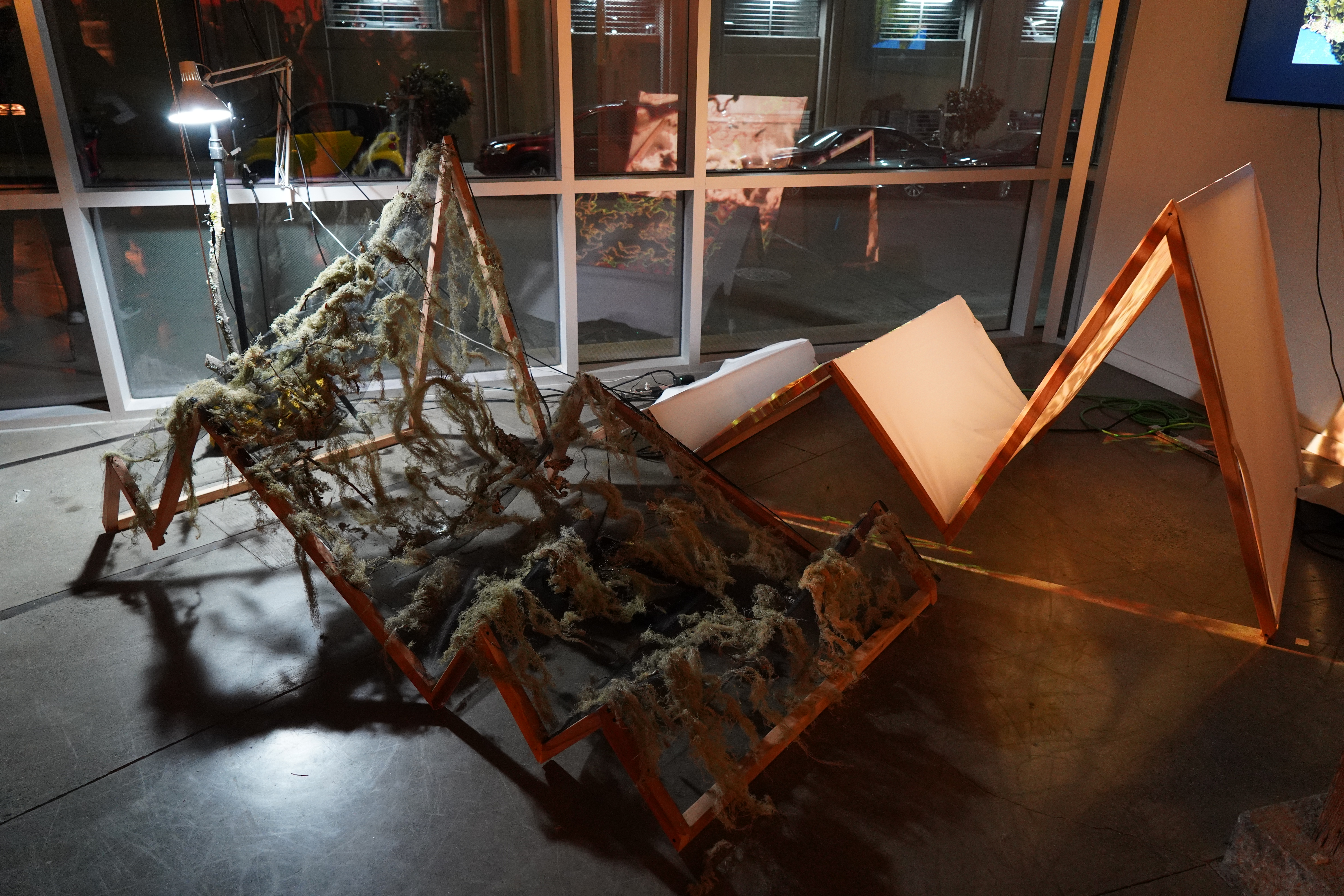
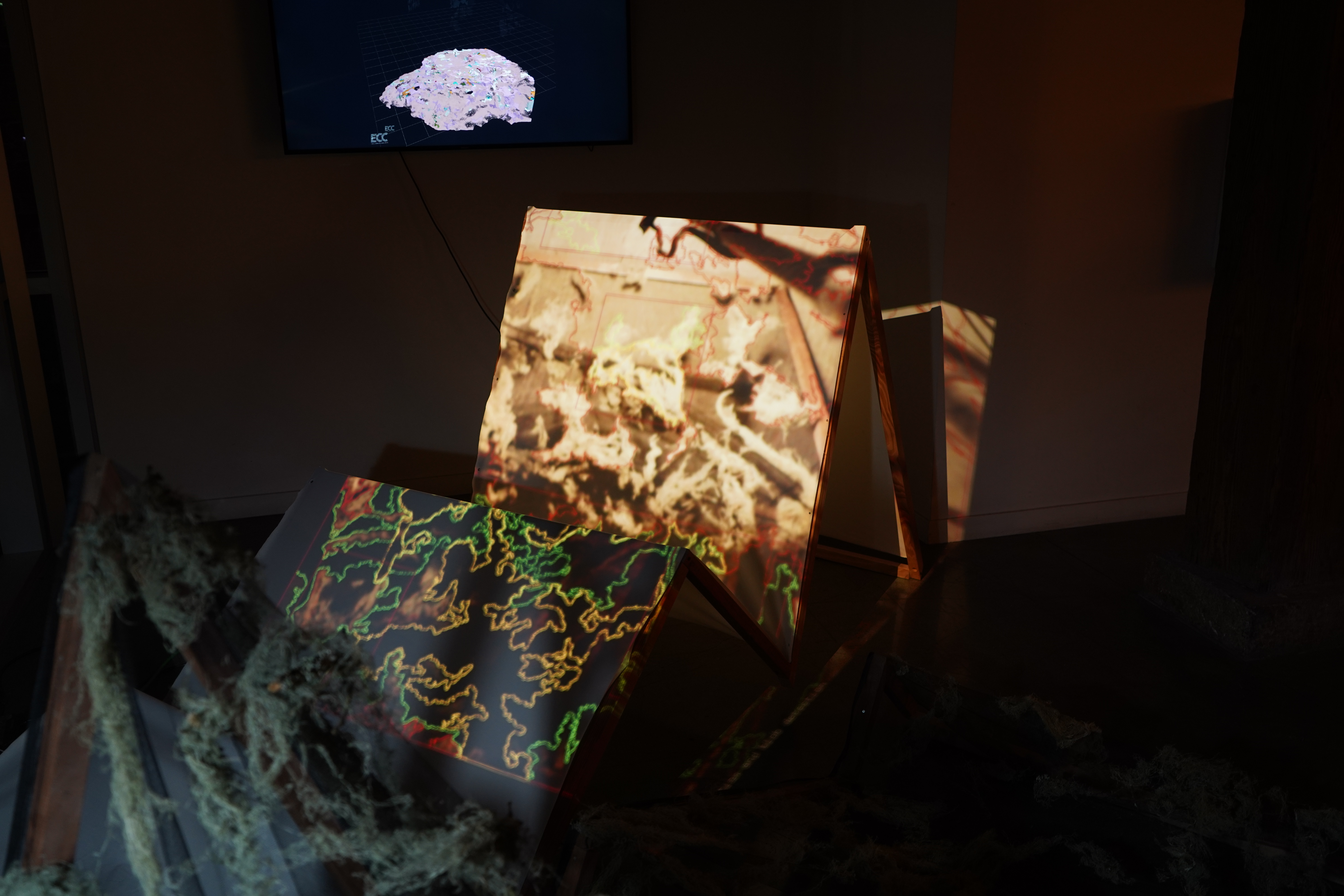
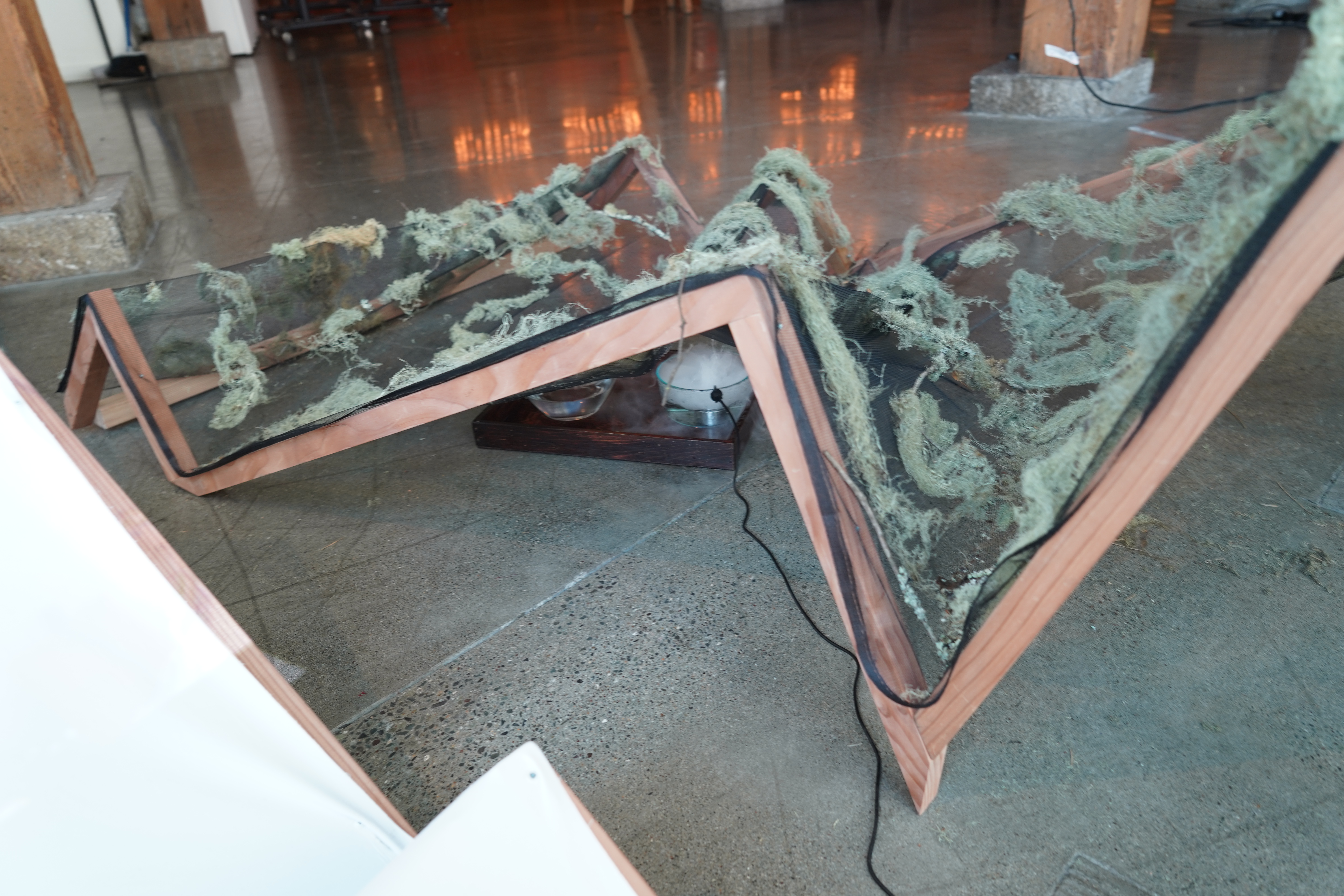
In the images you see two panels, one panel has Lace Lichen and Green sheild Lichen distributed on it. Then a camera hangs above it which sends the real-time stream from the camera and it is sent to a computer which processes the color/Luminance/shape of the Lichen and analyzes it mostly using OpenCV (Computer Vision). On the second panel you see the result of the processed/augmented Lichen projected onto the Panel. Then the processing also, speculatively "talks back" to the Lichen in the form of water vapor and light. The light and the ultrasonic water vapor are turned on and off depending on when the algorithms detects what the Lichen needs. While the signals from the Lichen are literally superficial (the shape and the light as opposed to deeper signals), this is why this is only a protoype.
In the computer vision processing I used filters inspired by Geological Surveys and the patterns they use to indicate different types of rock/geological compositions:
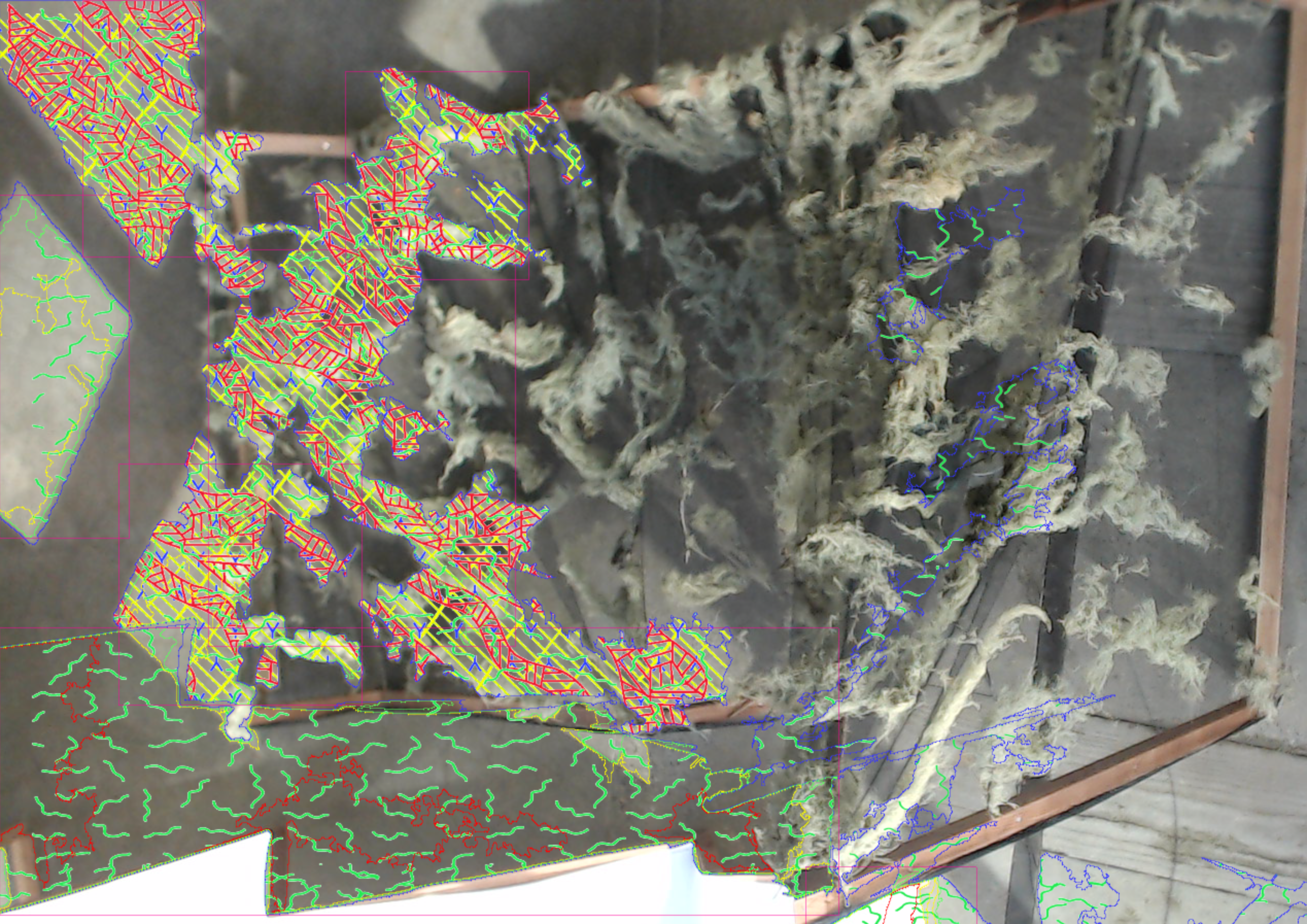
Some common questions I received from viewers were:
Is this real Lichen? Answer: yes
Where did you get it from? Answer: Golden Gate Park
How? Answer: I went there and collected it!
Lichen is almost all around us, including on rocks, concrete and lamp-posts. There was something very fulfilling about returning it to the area I found it in. It isn’t being thrown away or forgotten, it is just returned to where it always is! It is a living resource and a being that I related with in a particular way for a short amount of time, but it is also ever present in our environments. Working with this kind of life cycle is a connected, as opposed to alienated, “resource relation” or interspecies relations. I wonder how our technologies could have similar life cycles and accessibility.
Here are some images of the places where I collected the Lichen:

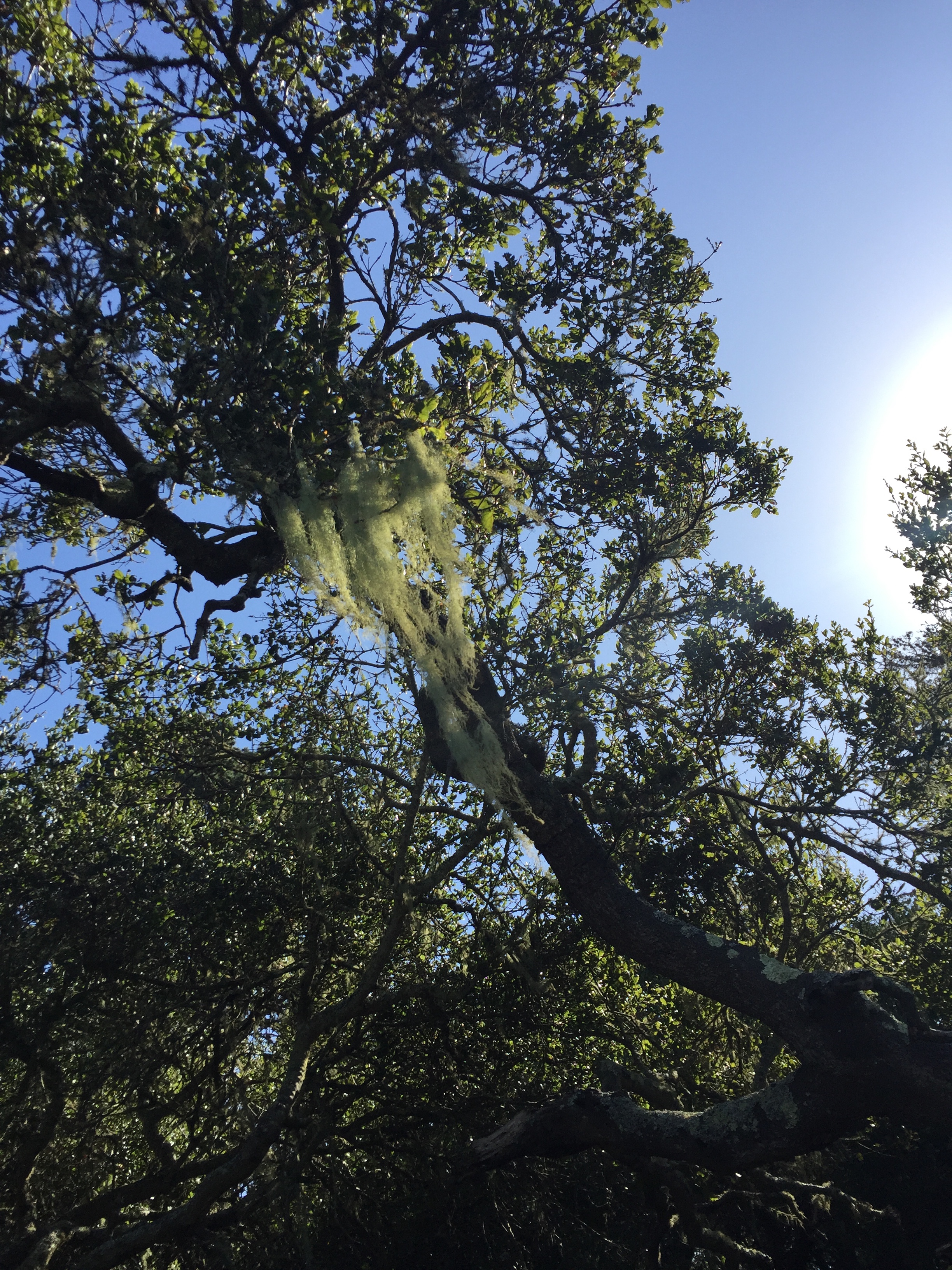
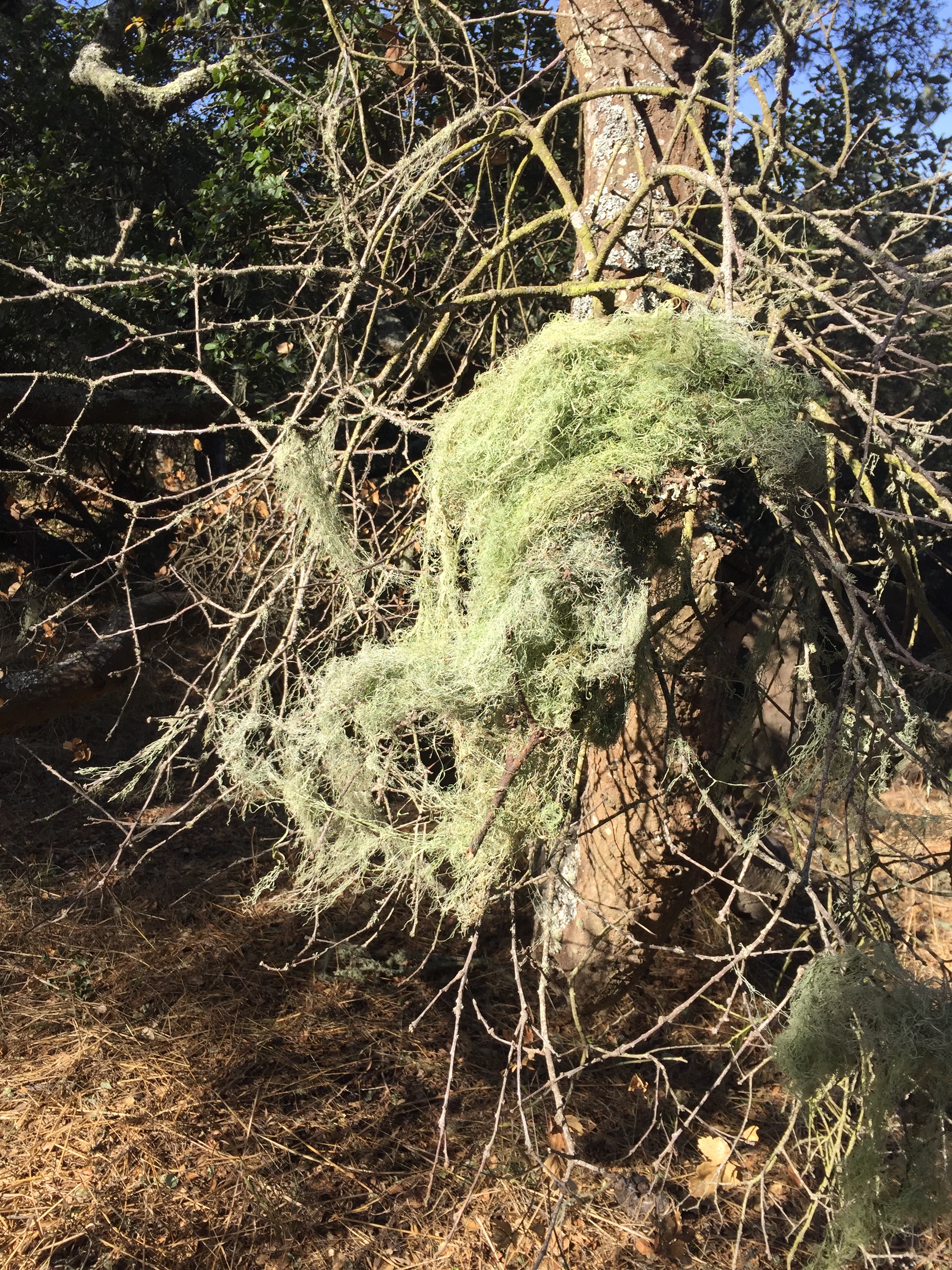
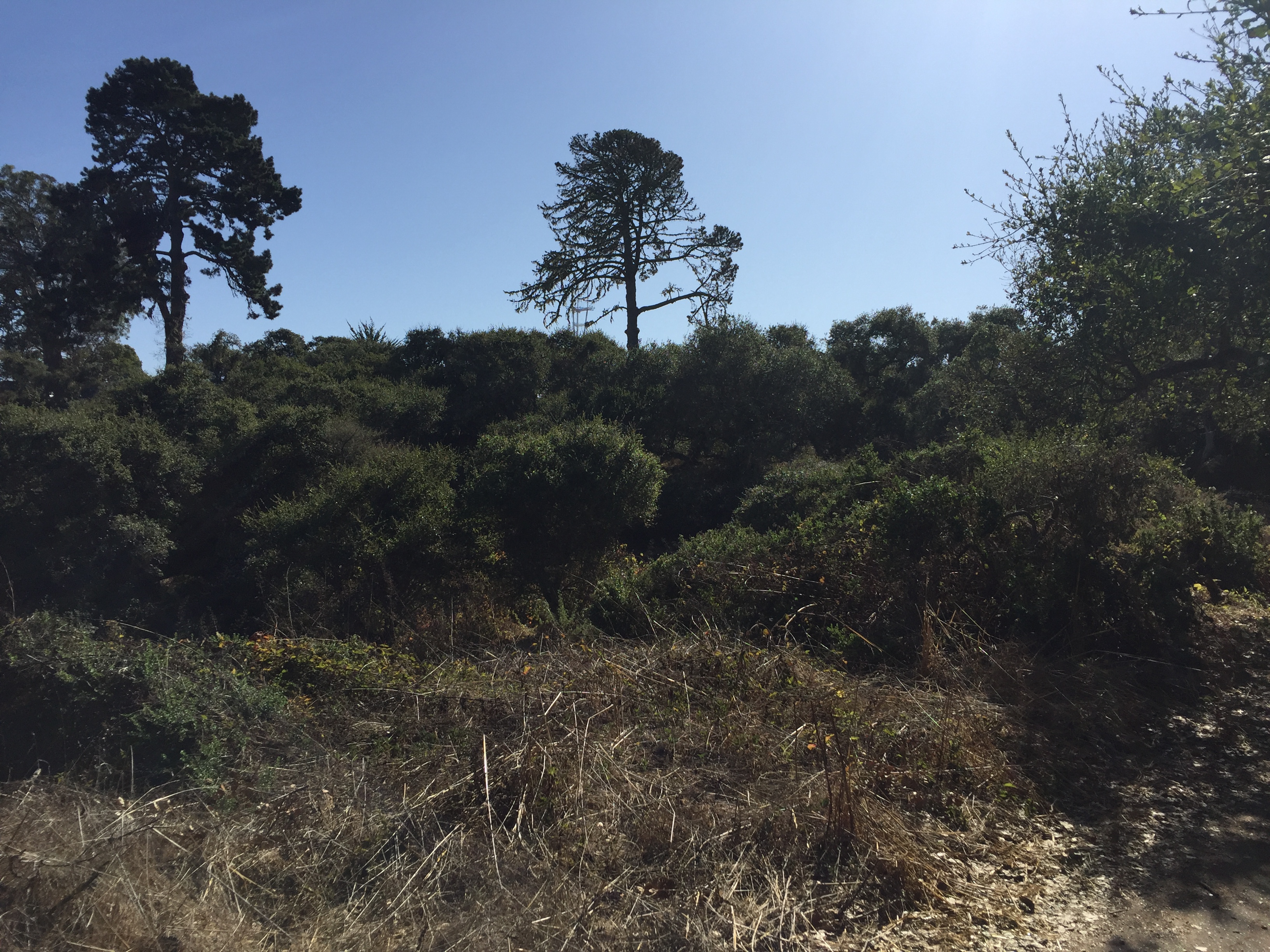
Working with Lichen as a living materiality was even more exciting than I expected. Firstly: it easily grasps onto and attaches to almost any complex surface (anything that isn’t smooth). I also found pieces of it inside my computer, camera, headphones, and pretty much everywhere after the exhibit. It naturally seems to cling to other things and to itself, giving it an amazing flexibility and strength. After leaving it in a bag, it took on a kind of cube shape and wrapped around itself. This capacity to attach to things and take on other shapes is both a physical material property and, to me, distinguishes the material as living.
Also unexpected was that as soon as I installed the piece, a spider came down from the ceiling, out of nowhere?! The spider looked at the lichen and jumped in to build a web. My first audience member took a utilitarian approach to the piece.
A strange 3d scan of the cube lichen:
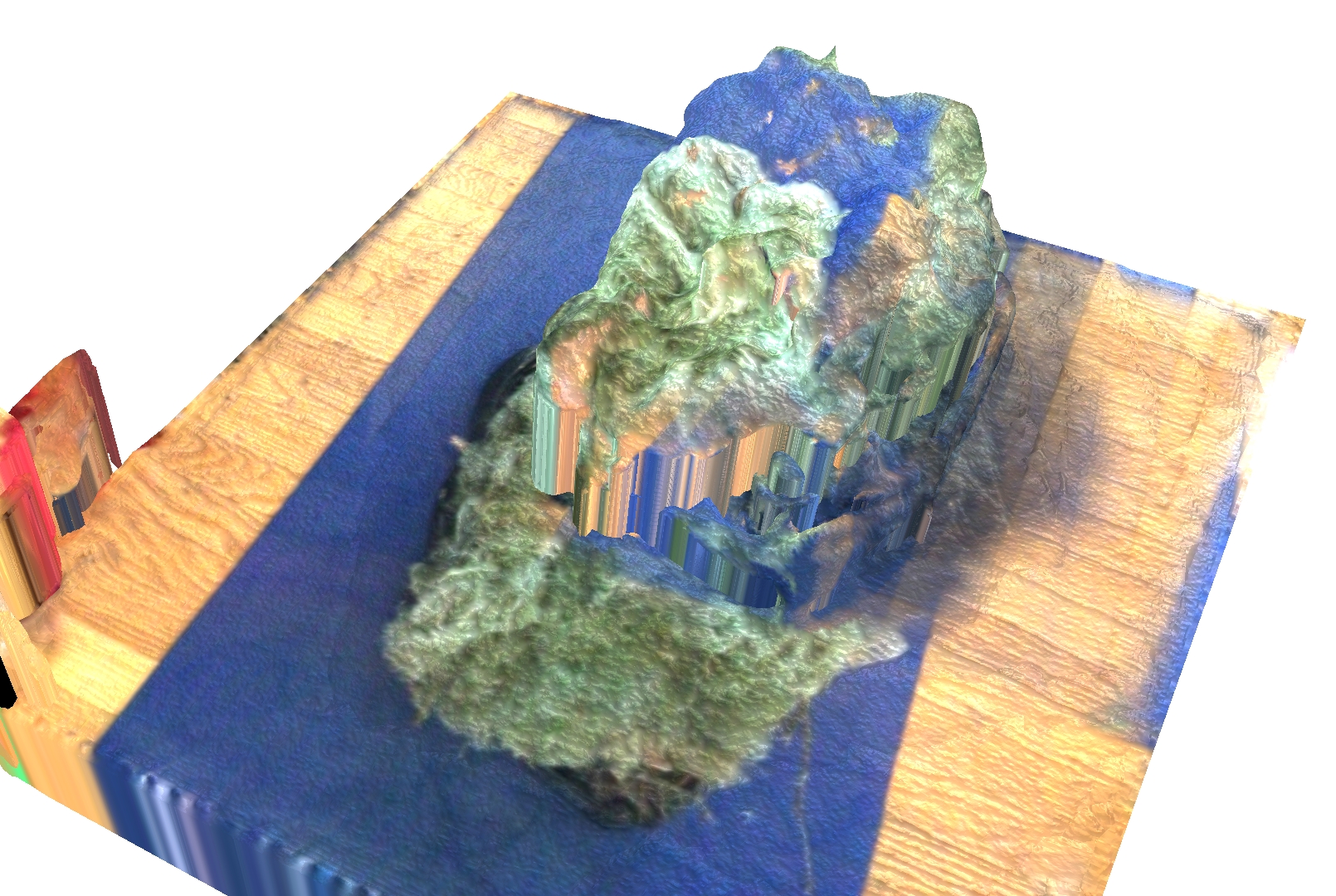
I want to encourage artists, designers, technologists, etc., to think more about what kinds of materials are abundant around them, living and “nonliving.” What can you collect and return without altering too much, and maybe especially in the context of urban environments or hybrid urban-organic environments.
I also found the response to these questions to be met with laughter, and this is also interesting. The fact that I went somewhere and grabbed stuff out of tree is joyful and I suppose elicits happiness, but this is also what people used to do all the time, specifically native groups in this area. Lace Lichen was used as a food, dye for cloths, hygiene material, and Lichen is currently used my many indigenous groups around the world for a whole host of interesting purposes, including as a hallucinogen (Davis, E. W. and J. A. Yost. 1983. Novel hallucinogens from eastern Ecuador. Botanical Museum Leaflets [Harvard University] 29(3): 291-295). Somehow collection practices are funny to us who commonly purchase everything, and it has a feeling of illegitimacy even though to literally “locally source” something is, in many ways, the most sensical. I think this question, is it “Real,” already reveals a lot about our context when we approach objects, ‘the indoors’ in general, but given the context of an Art Installation, especially for a “tech-art” festival. Yet, as the presence of the spider reveals, other organisms are usually present, and are already integrated in the built environment. Take a look at this seed pod which someone most likely smashed with their feet, but whose crushing results in the release of seeds.

Lastly, some folks in the audience were quick to pick up on the use of GANs in the piece, which was also out of context, it was taken out of its 2D context and mapped onto the 3D in a video animation.
My goals in designing the algorithm were to try to first make a GAN (or lets say register a probability distribution) of “Earth,” and more ambitiously “Ecological networks.” What this really came down to was images of rocks, landscapes and geological maps/diagrams of stratigraphy.
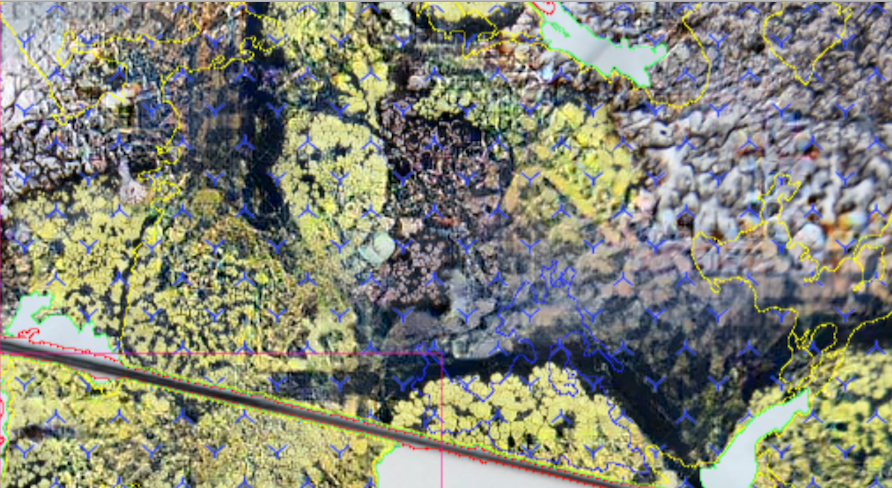
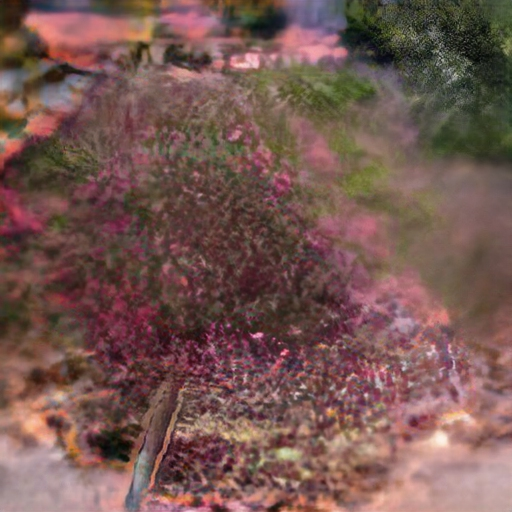
I then tried to take this “EarthGAN” (which is really a probability distribution produced based on images of rocks/landscapes/rock diagrams) and combine it with a GAN which had images of Lichen from this source: https://lichenportal.org/cnalh/ and from my own photographs. A few software engineer types picked up on how weird this is. In other words, how are GANs supposed to be combined in a meaningful way? As an artist at this moment in time, I sort of made a best guess of what might produce a visually interesting output.
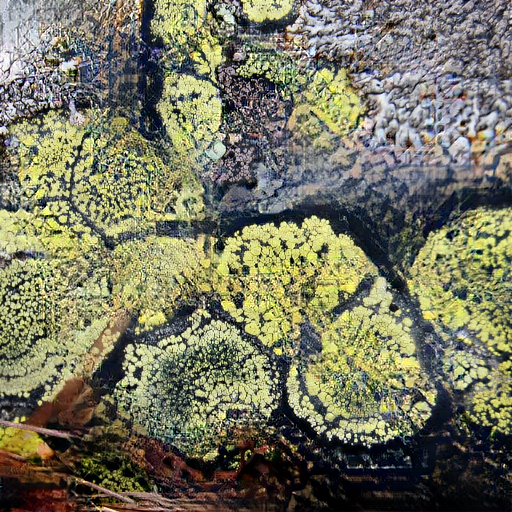
I think that many who work in transdisciplinary ways are faced with being on a potent yet uncomfortable ledge between “an interesting art piece” and pushing a relevant boundary in another feild. maybe its:
“an art piece” & “real” “social activism”
“an art piece” & “real” “racial justice”
“an art piece” & “real” “technology/product development”
“an art piece” & “real” “anthropology”
“an art piece” & “real” “ecology and conservation science”
“an art piece” & “real” “community development”
“an art piece” & “real” “urban planning”
I think this ledge ends up being generative for both artistic exploration as well as in terms of its potential impact on the “real" field that it might be addressed toward, or otherwise pushing the envelope on it's path toward it's goals. This transdisciplinary place also does important conceptual work, especially in terms of art and technology: it reveals the fact that technologies are also intuitive objects. They are objects resulting from intuitive human choices. And perhaps constructs that we consider “real” like the scientific method itself, can be thought of as intuitive objects, some posit that the root of science is an appeal to the “intuitive” (Kushnir, T., Gopnik, A., Schulz, L. and Danks, D., 2003. Inferring hidden causes. In Proceedings of the Annual Meeting of the Cognitive Science Society (Vol. 25, No. 25).). It also reveals that many objects of science and technology come out of collective human thinking, human culture and intuitions. They bear their embeddedness in the situation from which they come, as specific cultural ideologies, as part of specific structures of power, specific bodies etc (Haraway, D., 1988. Situated knowledges: The science question in feminism and the privilege of partial perspective. Feminist studies, 14(3), pp.575-599). The code that I write is borrowed, delicate, short-sighted and intelligent based on what I have access too, what background knowledge I have collected, and the literalness of my body, the way my specific relation to interface physically manifests, how one chooses to sit at a desk etc. Code and technology at large is never as abstracted as we try to design it out to be, it isn’t outside of the bodies and machines that produced the machines that produce it, reproduce it and augment it.
Which brings me to highlight some of the brilliant points made by Diana Ayton-Shenker, at the CODAME salon. We already live in a world which is the result of a particular “Art+Tech” mindset (such as iphones for example) and I wonder to what extent this particular brand of art&tech that we live in today, does and doesn’t allow for more awareness around the resources it uses, it’s living dependencies and the networks of other species that is shares space with.
Thanks to everyone who attended the salon, helped out in some way with the piece’s unfolding, or is reading this right now.
with gratitude,
Jules
shatterpatternjlc@protonmail.com
